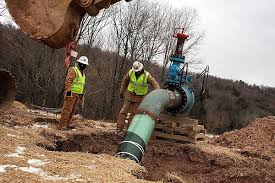
A review of production of shale wells in the U.S. shows many of the wells are not doing as well as drillers and owners had hoped.
It even raises the question of the profitability of the fracking boom according to one published report.
The Wall Street Journal compared the well-productivity estimates that top shale-oil companies gave investors to projections from third parties about how much oil and gas the wells are now on track to pump.
The result? It found thousands of shale wells drilled over the past several years are pumping less oil and gas than the owners forecast to the investors.
Two-thirds of projections made by the fracking companies between 2014 and 2017 in America’s four hottest drilling regions appear to have been overly optimistic, according to the analysis of some 16,000 wells operated by 29 of the biggest producers in oil basins in Texas and North Dakota.
Collectively, the companies that made projections are on track to pump nearly 10% less oil CLG9, +1.80% and gas NGG19, -2.06% than they forecast for those areas, according to the analysis of data from Rystad Energy AS, an energy consulting firm. That is the equivalent of almost one billion barrels of oil and gas over 30 years, worth more than $30 billion at current prices. Some companies are off track by more than 50% in certain regions.
The shale boom has lifted U.S. output to an all-time high of 11.5 million barrels a day, shaking up the geopolitical balance by putting U.S. production on par with Saudi Arabia and Russia. The Journal’s findings suggest current production levels may be hard to sustain without greater spending because operators will have to drill more wells to meet growth targets. Yet shale drillers, most of whom have yet to consistently make money, are under pressure to cut spending in the face of a 40% crude-oil price decline since October.





